- Home
- W. Somerset Maugham
The Moon and Sixpence
The Moon and Sixpence Read online
PENGUIN CLASSICS
THE MOON AND SIXPENCE
WILLIAM SOMERSET MAUGHAM was born in 1874 and lived in Paris until he was ten years old. He was educated at The King’s School, Canterbury, and at Heidelberg University. He later walked the wards of St. Thomas’s Hospital with a view to practicing medicine, but when he had qualified, the success of his first novel, Liza of Lambeth (1897), won him over to letters. Some of his hospital experience is reflected in the story, as well as in his later masterpiece Of Human Bondage (1915). With The Moon and Sixpence (1919) and Cakes and Ale (1930), his reputation as a novelist was further enhanced.
A celebrity by the age of thirty-three when he became one of most successful playwrights on the London stage, Maugham’s Edwardian comedy Lady Frederick, his first hit (1907), was followed by a string of successes just before and then after the First World War. At one point Maugham had four plays running at the same time in London’s West End. His theater career ended with Sheppey (1933).
His fame as a short-story writer began in 1921 with The Trembling of a Leaf, subtitled Little Stories of the South Sea Islands, which contained “Rain.” After initial magazine publication of each story he wrote, there were ten more collections. Somerset Maugham’s general nonfiction books also reflect his love of travel; they include On a Chinese Screen (1922) and Don Fernando (1935), essays, criticism, and the self-revealing The Summing Up (1938) and A Writer’s Notebook (1949).
He traveled widely in the Far East and throughout Europe. His permanent home since before the Second World War was on the French Riviera, which he vacated temporarily in 1940. He became Companion of Honor in 1954 and he died in 1965.
ROBERT CALDER is Professor of English at the University of Saskatchewan. He is the author of W. Somerset Maugham and the Quest for Freedom and Willie: The Life of W. Somerset Maugham, which won the 1989 Governor General’s Literary Award for Non-Fiction. Most recently he has written Beware the British Serpent: The Role of Writers in British Propaganda in the United States, 1939–1945 and A Richer Dust: Family, Memory and the Second World War.
W. SOMERSET
MAUGHAM
The Moon and
Sixpence
Introduction and Notes by
ROBERT CALDER
PENGUIN BOOKS
Published by the Penguin Group
Penguin Group (USA) Inc., 375 Hudson Street, New York, New York 10014, U.S.A.
Penguin Group (Canada), 90 Eglinton Avenue East, Suite 700, Toronto, Ontario,
Canada M4P 2Y3 (a division of Pearson Penguin Canada Inc.)
Penguin Books Ltd, 80 Strand, London WC2R 0RL, England
Penguin Ireland, 25 St Stephen’s Green, Dublin 2, Ireland
(a division of Penguin Books Ltd)
Penguin Group (Australia), 250 Camberwell Road, Camberwell, Victoria 3124, Australia (a division of Pearson Australia Group Pty Ltd)
Penguin Books India Pvt Ltd, 11 Community Centre, Panchsheel Park, New Delhi – 110 017, India
Penguin Group (NZ), 67 Apollo Drive, Rosedale, North Shore 0745, Auckland, New Zealand (a division of Pearson New Zealand Ltd)
Penguin Books (South Africa) (Pty) Ltd, 24 Sturdee Avenue, Rosebank, Johannesburg 2196, South Africa
Penguin Books Ltd, Registered Offices: 80 Strand, London WC2R 0RL, England
First published in Great Britain by William Heinemann Ltd 1919
First published in the United States of America by George H. Doran Company 1919
Published in Penguin Books (U.S.A.) 1977
This edition with an introduction and notes by Robert Calder published in Penguin Books (U.S.A.) 2005
Introduction and notes copyright © Robert Calder, 2005
All rights reserved
LIBRARY OF CONGRESS CATALOGING IN PUBLICATION DATA
Maugham, W. Somerset (William Somerset), 1874–1965.
The Moon and Sixpence/W. Somerset Maugham; introduction and notes by Robert Calder.
p. cm.—(Penguin classics)
Includes bibliographical references.
ISBN: 978-1-101-66157-4
1. Painters—Fiction. 2. England—Fiction. 3. Tahiti—Fiction. I. Calder, Robert, 1941– II. Title. III. Series.
PR6025.A86M6 2005
823’.912—dc22 2005051352
Except in the United States of America, this book is sold subject to the condition that it shall not, by way of trade or otherwise, be lent, resold, hired out, or otherwise circulated without the publisher’s prior consent in any form of binding or cover other than that in which it is published and without a similar condition including this condition being imposed on the subsequent purchaser.
The scanning, uploading and distribution of this book via the Internet or via any other means without the permission of the publisher is illegal and punishable by law. Please purchase only authorized electronic editions, and do not participate in or encourage electronic piracy of copyrighted materials. Your support of the author’s rights is appreciated.
Contents
Introduction by Robert Calder
Suggestions for Further Reading
THE MOON AND SIXPENCE
Explanatory Notes
Introduction
Book reviewers, once they have taken their fees to the bank, occasionally imagine that their commentaries actually serve to inform and instruct the authors whose work they dissect. More often than not this is a mere fancy, but on at least one occasion Somerset Maugham, who always claimed to be indifferent to the critics, gained from a reviewer’s suggestion. When Of Human Bondage, which was to become his most widely read book, appeared in 1915, an anonymous review in the Times Literary Supplement observed of the novel’s protagonist, Philip Carey, that “like so many young men he was so busy yearning for the moon that he never saw the sixpence at his feet.” On completing his next novel four years later, Maugham adopted the metaphor for its title: The Moon and Sixpence (called first and more awkwardly “Sixpence and the Moon” in his contract with William Heinemann).
Though this connection may seem to be merely a footnote in literary history, there are significant reasons to consider these two novels together. Even as he was writing Of Human Bondage, Maugham was looking ahead to his next novel, whose plot is briefly outlined in Philip’s conversations with fellow art students in bohemian Paris. There he learns from his friend Clutton that “in Brittany he had come across a painter whom nobody else had heard of, a queer fellow who had been a stockbroker and taken up painting at middle age, and he was greatly impressed by his work. He was turning his back on impressionism and working out for himself painfully an individual way not only of painting but of seeing.” Some time later, Clutton tells Philip that this odd painter is leaving for Tahiti:
“He was broke to the world. He was a brasseur d’affaires, a stockbroker I suppose you call it in English; and he had a wife and family, and he was earning a large income. He chucked it all to become a painter. He just went off and settled down in Brittany and began to paint. He hadn’t got any money and did the next best thing to starving.”
“And what about his wife and family?” asked Philip.
“Oh, he dropped them. He left them to starve on their own account. . . . He’s behaved like a perfect cad to his wife and children, he’s always behaving like a perfect cad; the way he treats the people who’ve helped him—and sometimes he’s been saved from starvation merely by the kindness of friends—is simply beastly. He just happens to be a great artist.”
Clutton’s account is, of course, a bare bones sketch of the life and career of the French painter Paul Gauguin which Maugham had heard in Paris in 1905, when he lived in Montparnasse for a year among a group of artists and writers which he describ
ed at length in Of Human Bondage. Clutton is modeled on the sharp-tongued and iconoclastic Irish painter Roderick O’Conor, a disciple of Gauguin from the time he had met him in Brittany and both an exponent of his aesthetic theories and an apologist for his antisocial attitude. Maugham, “already greatly interested in that mysterious, talented man, would have liked to learn from O’Conor what he could tell me about him; but unfortunately he took an immediate dislike to me.” Thus denied the detail that O’Conor might have provided about Gauguin, Maugham, as he confessed years later, was forced to fall back on “using the novelist’s privilege” and devising “a number of incidents to illustrate the character I had created on the suggestions afforded me by the scanty facts I knew about the French artist.”
What Maugham did manage to glean from O’Conor were largely the myths which had then grown around Gauguin—his instantaneous conversion to art, his abandonment of family, his ruthlessness, his idyllic life in Tahiti, and his death from leprosy (a fallacy which The Moon and Sixpence helped perpetuate). We now know that the reality was considerably different. Gauguin had painted industriously in his spare time for ten years before losing his job as a stockbroker, while Maugham’s protagonist, Charles Strickland, develops his interest in art very suddenly. Gauguin was concerned about his wife and children, and he hoped to achieve things for them through his art, even planning that they would eventually join him in Tahiti; Strickland, however, feels nothing for his family. Gauguin continually analyzed and discussed his painting, while Strickland is almost inarticulate and indifferent to artistic theory. Gauguin died of complications from syphilis in the Marquesas Islands whereas Strickland is killed by leprosy in Tahiti. With this in mind, it is understandable that the artist’s son Pola might write that in The Moon and Sixpence his mother “did not find a single trait of Strickland which had anything in common with her husband.”
Maugham, however, was not producing a biography; he was writing a novel and his interest lay more in the source of the “mysterious” talent of someone like Gauguin than in the details of his life. And in making an artist the focus of his story—in writing a kunstlerroman, or artist-hero novel—in 1919 he was hardly alone. Surveying the fiction of the early decades of the twentieth century, Van Wyck Brooks wrote:
The artist, one might almost say, is the typical hero in contemporary fiction From Jean-Christophe to Mendel, from The Flame of Life to The Moon and Sixpence, and how much further, as one glances over the list of significant novels of the last two decades, one is surprised to find how often the leading character is a painter, a musician or a writer. The artist has always appeared as a character in fiction, but never before, surely, has he so filled the novelist’s stage.
Although the occasional creative figure can be found in the earliest novels, it was not until the late nineteenth century that the artist appeared with any frequency, and even then his portrayal was usually sketchy and followed one of several stereotypes: the high-spirited bohemian, the casual dilettante, the precious aesthete, or the refined intellectual. The common method of presenting them, complained Katherine de Mattos in 1894, was “to huddle together a few of the ‘novelist’s properties,’ bind them around with certain tricks of speech and manner, push the scarecrow about a bit, and label it ‘painter.’ So long as there are plenty of pipes and pewters, incident and character will matter little.” Beneath this veneer, these caricature artists were most often socially-minded, with relatively conventional moral outlooks, and most of the emphasis was placed on the events of their lives rather than on the practice of their art.
At the turn of the twentieth century the artist moved out from the fictional background to become the central focus of a great many novels, and the kunstlerroman became one of the most widespread genres in English. Among many others, there were George Gissing’s The Private Papers of Henry Ryecroft (1903), Thomas Hardy’s The Well-Beloved (1903), Jack London’s Martin Eden (1909), Henry Handel Richardson’s Maurice Guest (1910), Stephen French Whitman’s Predestined (1910), Mary Austin’s A Woman of Genius (1912), D. H. Lawrence’s Sons and Lovers (1913), Frank Norris’s Vandover and the Brute (1914), Willa Cather’s The Song of the Lark (1915), Theodore Dreiser’s The Genius (1915), May Sinclair’s Tasker Jevons (1916), James Joyce’s A Portrait of the Artist as a Young Man (1916), Gilbert Cannan’s Mendel: A Story of Youth (1916), and Wyndham Lewis’s Tarr (1918).
With this proliferation of the kunstlerroman came a significant shift in the portrayal of the artist-hero. In place of the conventional and relatively harmless bohemianism of the nineteenth-century fictional artists, those in twentieth-century fiction rebel in a genuine and often profound manner. They frequently become more isolated than their predecessors, and their sensitivity, introspection, and artistic drive demands that they break loose from conventional society. As Gerald Jay Goldberg observed, the new artist-hero no longer feels “that it is incumbent upon him to represent the ‘collected ideology’ of his community. Didacticism in art is supplanted by self-expression and the individual sensibility becomes paramount.” In many cases, the artist not only no longer articulates the beliefs of his society; he sees himself as a gadfly stinging a complacent, myopic public to action—or at least to comprehension.
In part, this growth of the kunstlerroman and reconfiguring of the artist-hero was a response to the concerns and anxieties of the modern age. Inspired by the myth of the genius or superman advanced in the writings of Nietzche, many people looked back with fascination to the generation of antisocial artists that came to prominence at the turn of the century. In Verlaine, Wagner, Van Gogh, Rimbaud, and Gauguin they saw men who had defiantly rejected conventional morality and orthodox social attitudes. This interest in individuality, creativity, and rebellion was a form of romanticism engendered by the widespread disillusionment with the waste and futility of the Great War and by a growing feeling that increased mechanization and industrialism were destroying people’s instinctual qualities. “Industrialisation,” explained David Paul, “imposes a routine, not based on tradition or any system of beliefs, but simply of the motives of the machine—the saving of time, the noncreative multiplication of production, speed, money. The process of production becomes so sectionalised that all creative sense is lost.” The artist, said Van Wyck Brooks, had come to represent someone whose essential humanity had not been ground down by mechanization:
Thanks to the universal blocking and checking of instinct that modern industrialism implies for the run of men and even women, the type of life that still, at whatever cost, affords scope for the creative impulses is haloed with an immense desirability. In our age in which everything tends toward a regimentation of character, the average man, presented with no ideal but that of success, finds himself almost obliged to yield up one by one the attributes of a generous humanity. No wonder the artist has come to be the lodestone of so many wishes. He alone seems to be able to keep open the human right of way, to test and explore the possibilities of life.
Throughout his career, Maugham always had a shrewd sense of public tastes and opinion, and he must have been aware of the widely held desire of readers to experience, even vicariously, the breaking of bonds of a character like Strickland. As he revealed in The Summing Up, the artist was especially attractive because he was one of the very few types of people who can carve his own path in life:
The artist can within certain limits make whatever he likes of his life. In other callings, in medicine for instance or the law, you are free to choose whether you will adopt them or not, but having chosen, you are free no longer. You are bound by the rules of your profession; a standard of conduct is imposed on you. The pattern is predetermined. It is only the artist, and maybe the criminal, who can make his own.
In The Moon and Sixpence, Maugham emphasizes the striking disparity between the constraints of social convention and the autonomy of the artist by framing Strickland’s story with a detailed picture of a London life that is both stultifying and petty; and, though it is a particular existence no
t shared by many of his readers, its tedium, routine, and banality are enough to remind them of the circumscribed nature of their own lives.
Maugham begins to build this picture in the first chapter, where, adopting the technique of Swift in Gulliver’s Travels and Defoe in Robinson Crusoe, he acts as if he were writing not a novel, but a memoir of a real and famous painter. With mock gravity his narrator analyzes the range of solid, pedantic studies of Charles Strickland: the earliest critical article, the subsequent book of “notes,” the family apologia, and the inevitable caustic dissection. Each is found to miss the essential genius of the painter. Claiming to have known the great man more intimately than most people, the narrator suggests that he has a special knowledge of a part of Strickland’s career that has been obscured in the public accounts. At the end of the novel, when he has told his tale and his readers have seen more deeply into the artist, his journey, and his creativity, he reminds them of where they sit by bringing them back both to the pretensions and superficiality of modern “civilized” London life and to another sanitized examination of Strickland, this in a book being written by a “distinguished American critic,” Mr. Van Busche Taylor.
The misunderstanding and misrepresenting of a famous artist after his death by those—widows, family, friends, and critics—with vested interests in advancing their own versions of the man is an idea that Maugham developed more fully and skillfully in Cakes and Ale (1930). The first eight chapters of The Moon and Sixpence provide a taste of the later novel’s satiric treatment of the London social and literary scene in its acerbic picture of literary luncheons, lionizing society hostesses, and commercially-minded authors. It was a milieu that Maugham knew well, and his early readers would have recognized a number of celebrated figures among its characters: Richard Twining and George Road are clearly the Edwardian authors Richard Whiting and George Street, and Rose Waterford is very likely based on Maugham’s friend Violet Hunt. Mrs. Strickland, moreover, bears a considerable resemblance to the prominent society hostess of the time Lady (Sibyl) Colefax.

 The Skeptical Romancer: Selected Travel Writing
The Skeptical Romancer: Selected Travel Writing The Summing Up
The Summing Up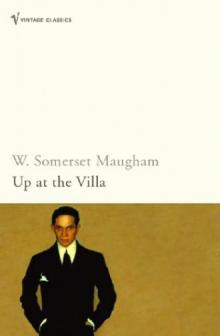 Up at the Villa
Up at the Villa The Razor's Edge
The Razor's Edge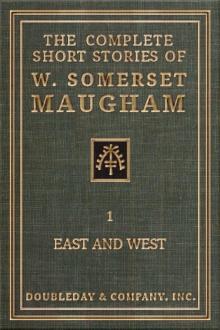 The Complete Short Stories of W. Somerset Maugham: East and West (Vol. 1 of 2))
The Complete Short Stories of W. Somerset Maugham: East and West (Vol. 1 of 2))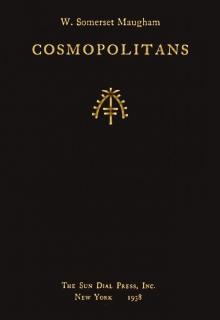 Cosmopolitans
Cosmopolitans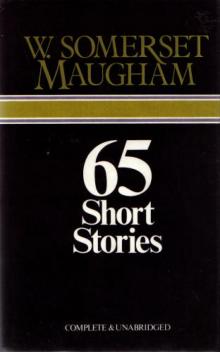 65 Short Stories
65 Short Stories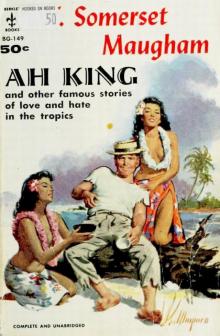 Ah King (Works of W. Somerset Maugham)
Ah King (Works of W. Somerset Maugham)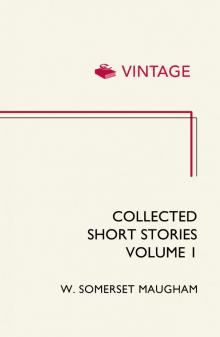 Collected Short Stories: Volume 1
Collected Short Stories: Volume 1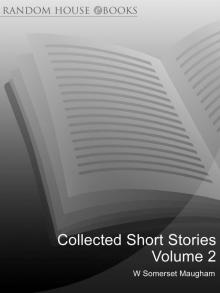 Collected Short Stories Volume 2
Collected Short Stories Volume 2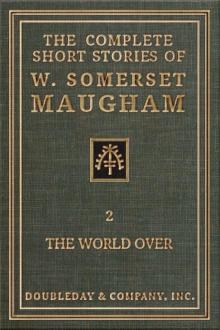 The Complete Short Stories of W. Somerset Maugham - II - The World Over
The Complete Short Stories of W. Somerset Maugham - II - The World Over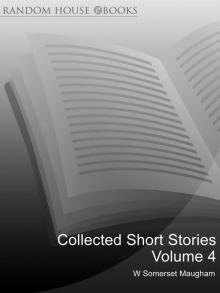 Collected Short Stories Volume 4
Collected Short Stories Volume 4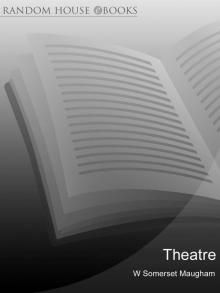 Theatre
Theatre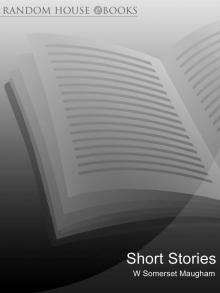 Short Stories
Short Stories Then and Now
Then and Now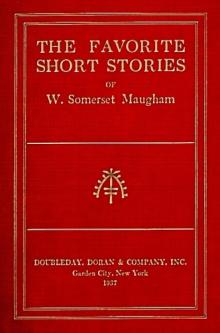 The Favorite Short Stories of W. Somerset Maugham
The Favorite Short Stories of W. Somerset Maugham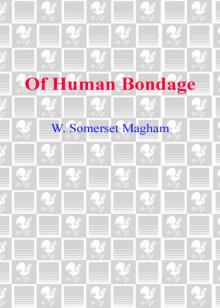 Of Human Bondage
Of Human Bondage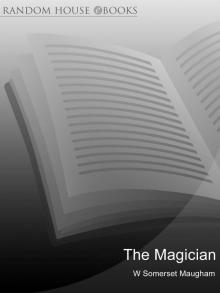 The Magician
The Magician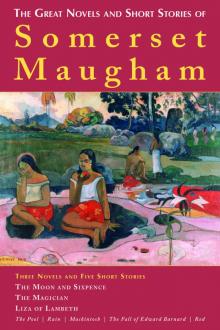 The Great Exotic Novels and Short Stories of Somerset Maugham
The Great Exotic Novels and Short Stories of Somerset Maugham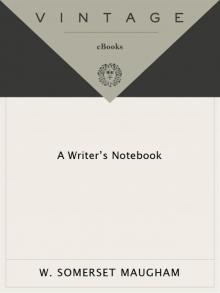 A Writer's Notebook
A Writer's Notebook Christmas Holiday
Christmas Holiday The Making of a Saint
The Making of a Saint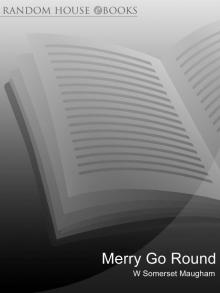 Merry Go Round
Merry Go Round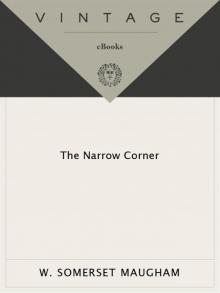 The Narrow Corner
The Narrow Corner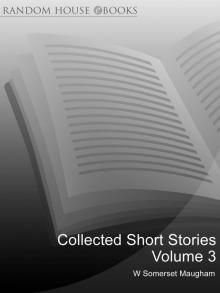 Collected Short Stories Volume 3
Collected Short Stories Volume 3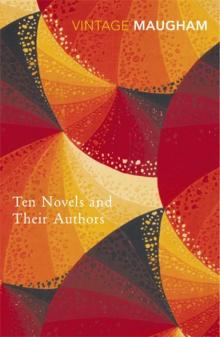 Ten Novels and Their Authors
Ten Novels and Their Authors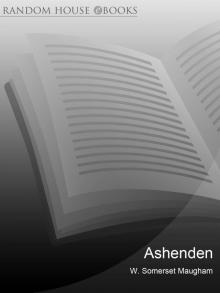 Ashenden
Ashenden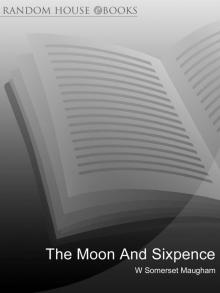 The Moon and Sixpence
The Moon and Sixpence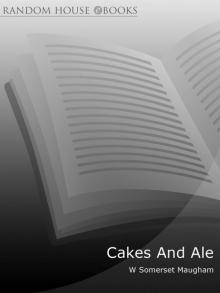 Cakes and Ale
Cakes and Ale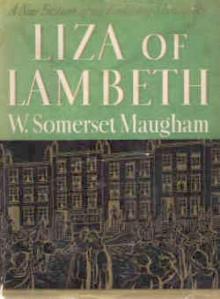 Liza of Lambeth
Liza of Lambeth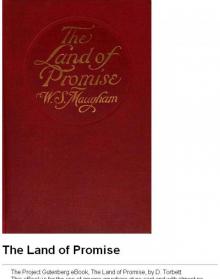 The Land of Promise: A Comedy in Four Acts (1922)
The Land of Promise: A Comedy in Four Acts (1922)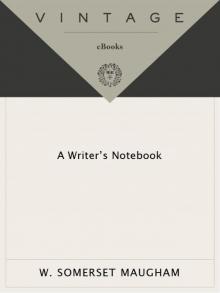 A Writer's Notebook (Vintage International)
A Writer's Notebook (Vintage International)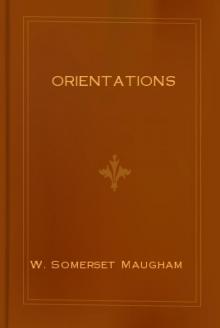 Orientations
Orientations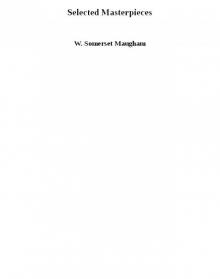 Selected Masterpieces
Selected Masterpieces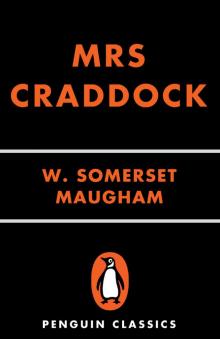 Mrs Craddock
Mrs Craddock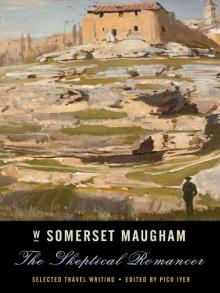 The Skeptical Romancer
The Skeptical Romancer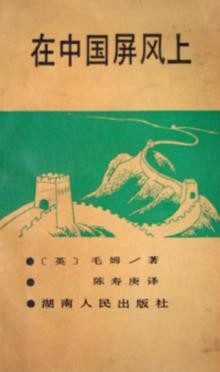 On a Chinese Screen
On a Chinese Screen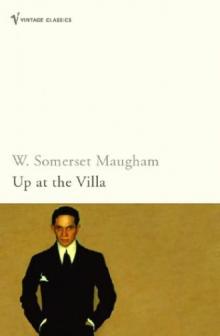 (1941) Up at the Villa
(1941) Up at the Villa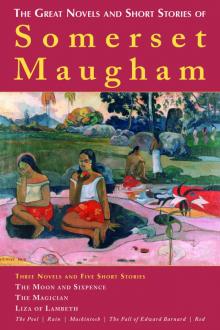 The Great Novels and Short Stories of Somerset Maugham
The Great Novels and Short Stories of Somerset Maugham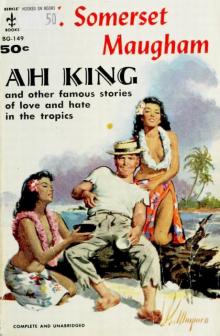 Ah King
Ah King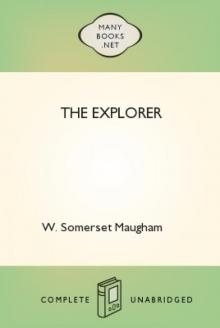 The Explorer
The Explorer The Skeptical Romancer: Selected Travel Writing (Vintage Departures)
The Skeptical Romancer: Selected Travel Writing (Vintage Departures) The Complete Short Stories of W. Somerset Maugham - I - East and West
The Complete Short Stories of W. Somerset Maugham - I - East and West